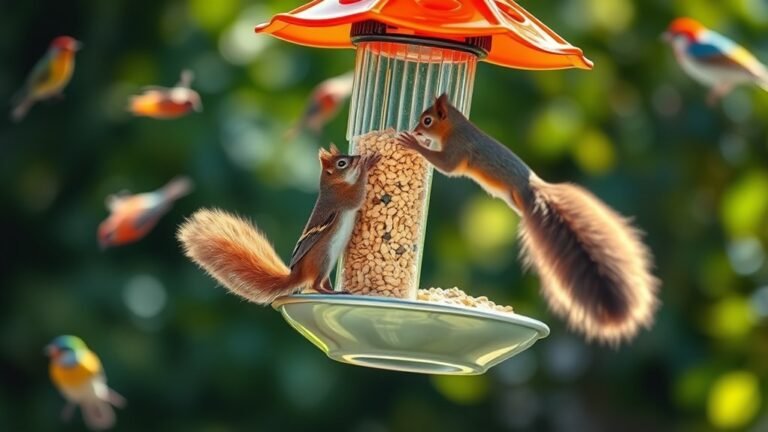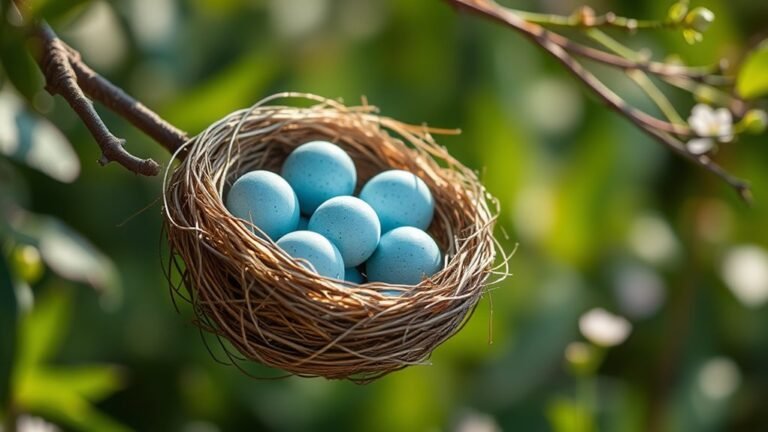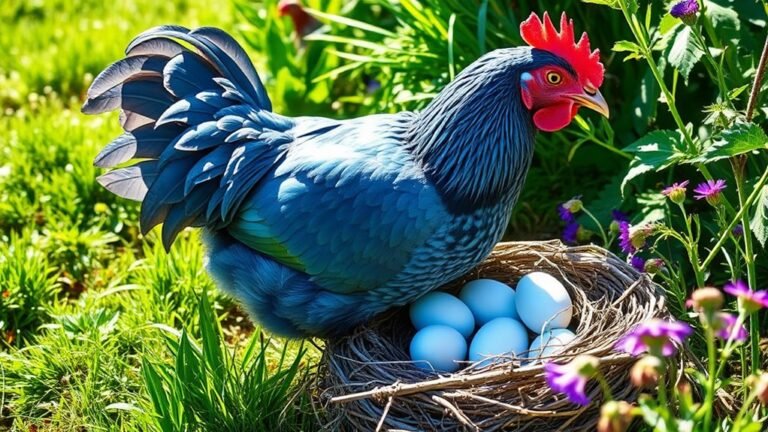Birds With Orange Beaks: Identification and Facts
Birds with orange beaks, like the American Oystercatcher and Great Egret, are visually striking. Their bright beaks play an important role in health signaling and attracting mates. The shape of their beaks shows how they feed in their environments. Their habitats can change these traits and help us understand their roles in ecosystems. Observing these birds gives insight into their lives and interactions in nature.
Key Takeaways
Orange-beaked birds stand out due to their bright beaks. These beaks help attract mates and communicate with others. Birds like the American Oystercatcher and Great Egret have orange beaks suited for their feeding habits, such as opening shellfish.
These birds live in various places like wetlands and coastal regions. Their environments foster social interactions and maintain ecosystem balance. They eat fruits, seeds, and insects, playing a key role in seed dispersal and supporting ecological health.
To observe orange-beaked birds, you need patience and quiet. Their striking beaks represent energy and liveliness, making them fascinating wildlife to watch.
Overview of Orange-Beaked Birds

When it comes to avian diversity, orange-beaked birds represent an enthralling group characterized by their distinctive coloration and unique adaptations.
You'll notice that their bright colorations often serve important ecological roles, such as attracting mates or signaling species variations.
These birds frequently adapt to their environments, manifesting in diverse beak shapes and sizes that facilitate access to various food sources. Some species, for instance, exhibit elongated beaks suited for probing flowers, while others might showcase stout beaks built for cracking seeds.
This diversity not only showcases evolutionary specializations but is also an essential element in maintaining ecosystem balance.
Understanding these adaptations can deepen your appreciation for their roles within their habitats, fostering a sense of belonging in the world of ornithology.
Common Species With Orange Beaks
Many birds displaying orange beaks have adapted to their specific ecological niches, resulting in a fascinating array of species.
For instance, the American Oystercatcher features a striking orange bill designed for prying open shellfish, showcasing beak variations that enhance feeding efficiency.
Similarly, the Great Egret exhibits an orange-yellow angled bill, essential for its predatory lifestyle in wetlands.
Both species reflect species diversity in avian populations, each utilizing their beaks for survival in different environments.
Understanding these common species not only deepens your appreciation for their unique adaptations but also highlights the complex interactions within ecosystems.
Observing these birds can enrich your connection to nature, inspiring a sense of community in conservation efforts.
The Role of Beak Color in Bird Identification

As you observe various bird species, beak color serves as a critical identifier, offering insights into their behaviors and habitats. Different hues, including orange, often indicate specific beak functions, such as feeding habits or mate attraction.
Evolutionarily, birds may have developed vibrant beaks to signal health or reproductive fitness, with color perception playing a key role in both inter-species communication and survival. For instance, you might notice that some species with orange beaks are more adept at foraging for fruit, while others rely on their color to attract mates.
Habitat Preferences of Orange-Beaked Birds
Understanding the habitat preferences of birds with orange beaks reveals fascinating connections between their coloration and ecological niches. These birds often thrive in areas with rich habitat diversity, such as wetlands, mangroves, and coastal regions.
You'll notice how their striking beak color aids in social interactions within these vibrant communities. Orange beaks may also indicate specific environmental adaptations that enhance their survival abilities, like foraging techniques suited to various habitats.
By examining these preferences, you find that their distribution often reflects the availability of food resources and breeding sites.
Thus, recognizing the intricate relationships between orange-beaked birds and their environments not only deepens your appreciation for their existence but also highlights the importance of conserving diverse ecosystems.
Feeding Habits and Diets

Orange-beaked birds exhibit a diverse range of feeding habits and diets that are intricately linked to their ecological roles.
To understand these fascinating creatures, consider these key aspects:
- Feeding behaviors: Some species forage on the ground, while others thrive in trees or water.
- Dietary preferences: Their diets vary widely, including fruits, seeds, insects, and fish, catering to their specific environments.
- Adaptation strategies: Many adapt their feeding techniques based on seasonal availability, ensuring a balanced diet year-round.
These feeding behaviors and dietary preferences not only define their survival strategies but also play crucial roles in their ecosystems, contributing to seed dispersal and population control of insects.
Appreciating these connections deepens your understanding of these vibrant birds.
Nesting Behaviors and Reproduction
Feeding habits naturally influence nesting behaviors and reproductive strategies in birds with orange beaks. Typically, these birds establish intricate nesting strategies, tailored to their dietary needs and environmental conditions.
You'll notice that some species prefer building their nests high in trees, taking advantage of the abundant insects around, while others opt for coastal areas, utilizing marine resources.
Breeding rituals play an essential role, too. Males often engage in elaborate displays to attract females, showcasing their vibrant beaks and energetic movements.
After courtship, both parents share responsibilities in building the nest and incubating the eggs, ensuring maximum care for their young.
Understanding these behaviors is key to appreciating the complex lives these enchanting birds lead as they adapt to their surroundings while nurturing their offspring.
Migration Patterns of Orange-Beaked Species
Many birds with orange beaks commence on extensive migrations, often traveling thousands of miles between breeding and wintering grounds. Understanding their migration patterns can deepen your appreciation for these remarkable creatures.
Consider these key aspects:
- Migration Timing: Many species begin their journey as days shorten, signaling seasonal changes.
- Seasonal Routes: They typically follow established corridors, often guided by geographical features like coastlines.
- Environmental Cues: Changes in temperature and food availability also play essential roles in their migration decisions.
These factors intricately affect their survival, reflecting how well-adapted orange-beaked species are to their environments.
Vocalizations and Communication
While you observe the striking beauty of birds with orange beaks, you'll likely notice their intricate vocalizations that play an essential role in communication.
These birds employ various communication methods, enabling them to convey messages effectively within their social groups. You'll find that many species utilize vocal mimicry techniques, imitating calls of other birds or even environmental sounds to camouflage their presence or attract mates.
Their vocalizations, ranging from melodious songs to sharp alarms, serve multiple purposes, including territory defense and navigation. By understanding these calls, you can gain deeper insights into their behaviors and social structures.
This fascinating interplay highlights the complexity of avian communication, enriching your appreciation of these vibrant creatures and their natural world.
Conservation Status and Threats
As climate change accelerates and habitats degrade, birds with orange beaks face significant threats that jeopardize their survival. Here are three critical issues:
- Habitat Loss: Urbanization and deforestation fragment their living environments, making it harder for them to find food and mates.
- Human Impact: Pollution and overfishing lead to declines in suitable prey, affecting breeding success.
- Climate Change: Changing weather patterns disrupt breeding cycles and migratory routes.
To combat these challenges, conservation efforts involve legislation protection, habitat restoration, and breeding programs designed to boost population numbers.
By participating in local initiatives and supporting sustainable practices, you can play a part in safeguarding these vibrant species from further decline.
Together, we can guarantee they thrive for future generations.
The Impact of Orange-Beaked Birds on Ecosystems
Birds with orange beaks play an integral role in their ecosystems, influencing a variety of ecological processes.
As active participants in food webs, these birds contribute markedly to seed dispersal and pollination. When you observe them foraging, you witness a delicate balance; their feeding habits control insect populations, which in turn supports plant health.
Their presence fosters biodiversity, promoting a rich array of life forms within their habitat. Additionally, orange-beaked birds often serve as prey for larger predators, emphasizing their importance in maintaining predator-prey dynamics.
Observing and Photography Tips
Observing orange-beaked birds in their natural habitats can be a rewarding experience for both enthusiasts and researchers alike.
To augment your birdwatching and photography experience, consider these tips:
- Guarantee you have the right birdwatching gear, such as binoculars and field guides, to identify species accurately.
- Use photography techniques like fast shutter speeds to capture their movements without blur.
- Practice patience and stealth; staying quiet increases your chances of seeing these beautiful birds.
Fun Facts About Orange-Beaked Birds
While you explore the world of orange-beaked birds, you'll discover fascinating adaptations that enhance their survival. The vibrant color of their beaks isn't just for show; it plays a crucial role in attracting mates and signaling health.
In many cultures, orange signifies energy and enthusiasm—qualities echoed in these birds' lively behavioral traits. For instance, species like the American oystercatcher use their bright beaks to pry open shellfish, showcasing their specialized feeding techniques.
You'll also notice social interactions that reinforce bonds within flocks, indicating complex social structures. Understanding these traits can make your observations richer, sparking a deeper connection to your environment.
Embracing their color symbolism can enhance your appreciation for these unique avian wonders.
Frequently Asked Questions
Do All Orange-Beaked Birds Have the Same Behavior Patterns?
Not all orange-beaked birds show the same behavior patterns. Their behaviors vary due to factors like their environment, habitats, and availability of food. These differences shape how they interact and survive in different areas and conditions.
How Can I Attract Orange-Beaked Birds to My Backyard?
To attract orange-beaked birds to your backyard, set up bird feeders with seeds they like. Use native plants to make your space feel like their natural home. This will create a friendly environment, inviting these lovely birds to visit often. Enjoy watching them as they come and go!
Are Orange Beaks a Sign of Health in Birds?
Orange beaks often indicate good health in birds. They can show that a bird has a high-quality diet and overall well-being. Healthy birds usually have bright colors, so an orange beak can serve as a reliable sign of health in the birds you observe. This colorful feature suggests that the bird is thriving and has access to essential nutrients.
Do Baby Birds Have Orange Beaks or Different Colors?
Baby birds usually have different beak colors than adult birds. As they grow, their beak colors change. This change shows their development and diet. These colors are important signs of their health and adaptation to their environment.
What Is the Lifespan of Birds With Orange Beaks?
The lifespan of birds with orange beaks depends on their species and environment. Some birds live for many years, while others may live only a few years. Factors like their habitat, diet, and threats from predators play a key role in determining their lifespan. For example, larger birds often have longer lifespans compared to smaller ones. Understanding these factors can help you appreciate the diverse lives of these colorful creatures.

Kashvi is a passionate bird enthusiast and nature lover who has been fascinated by the world of birds for years. With a keen eye for detail and a love for learning, Kashvi is dedicated to sharing her knowledge and insights with fellow bird enthusiasts on Avian Enthusiasts. Through her engaging and informative articles, Kashvi aims to inspire others to join her in exploring the fascinating world of birds and to promote a deeper appreciation for these incredible creatures.







